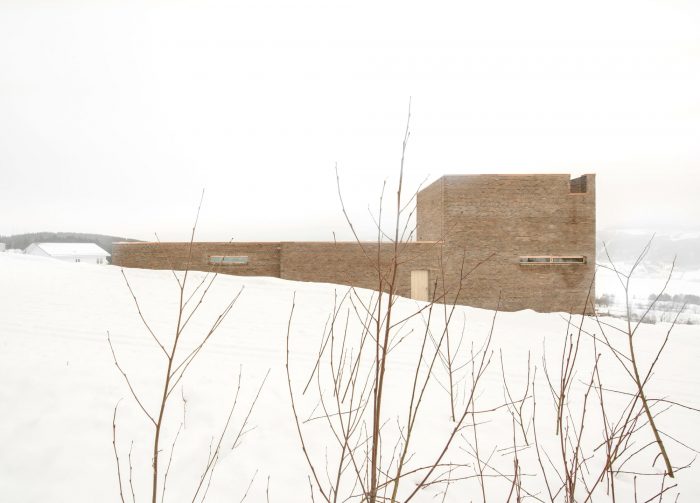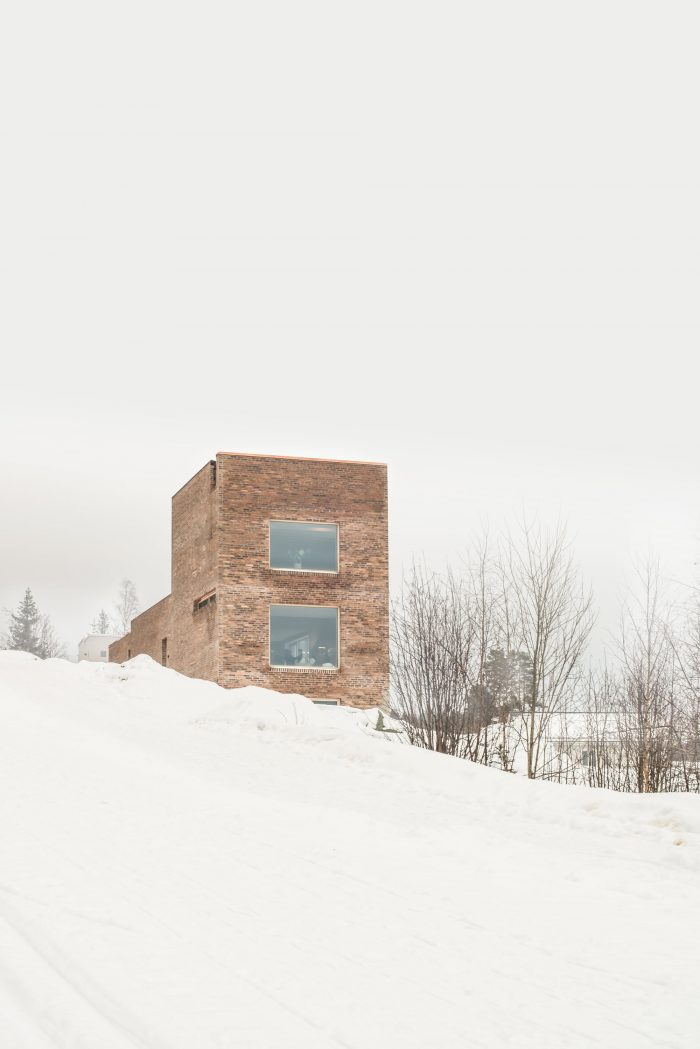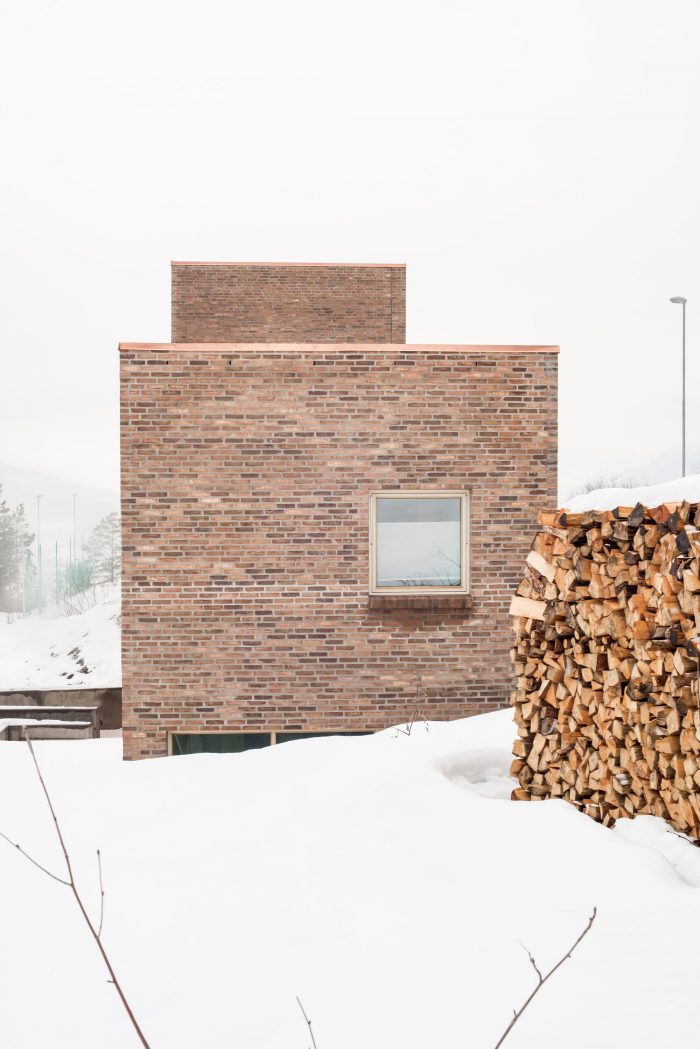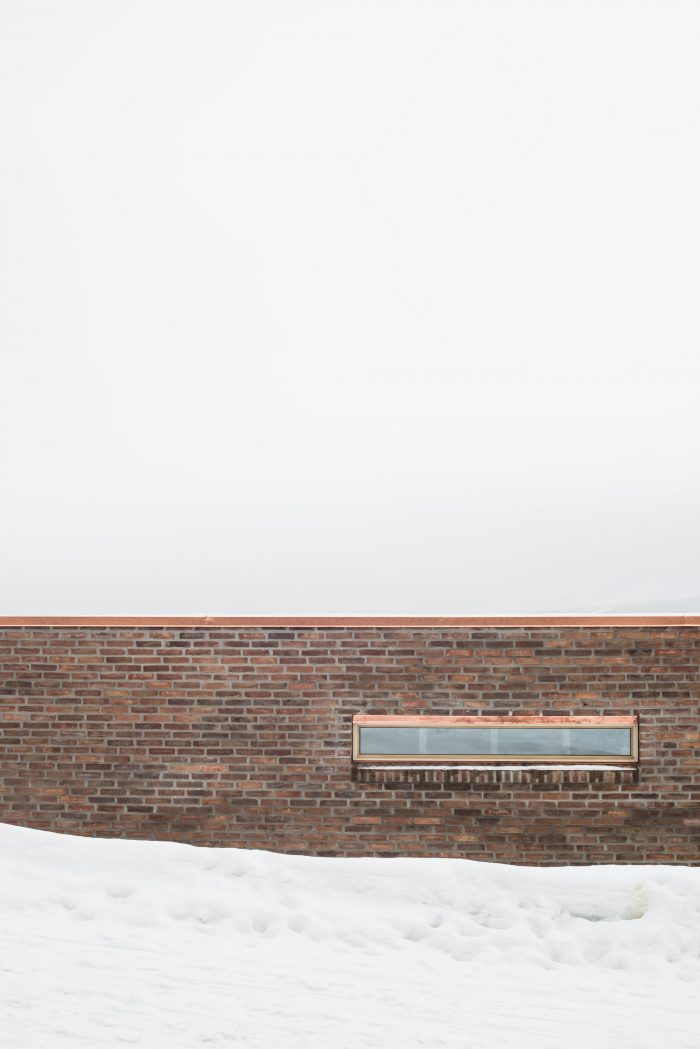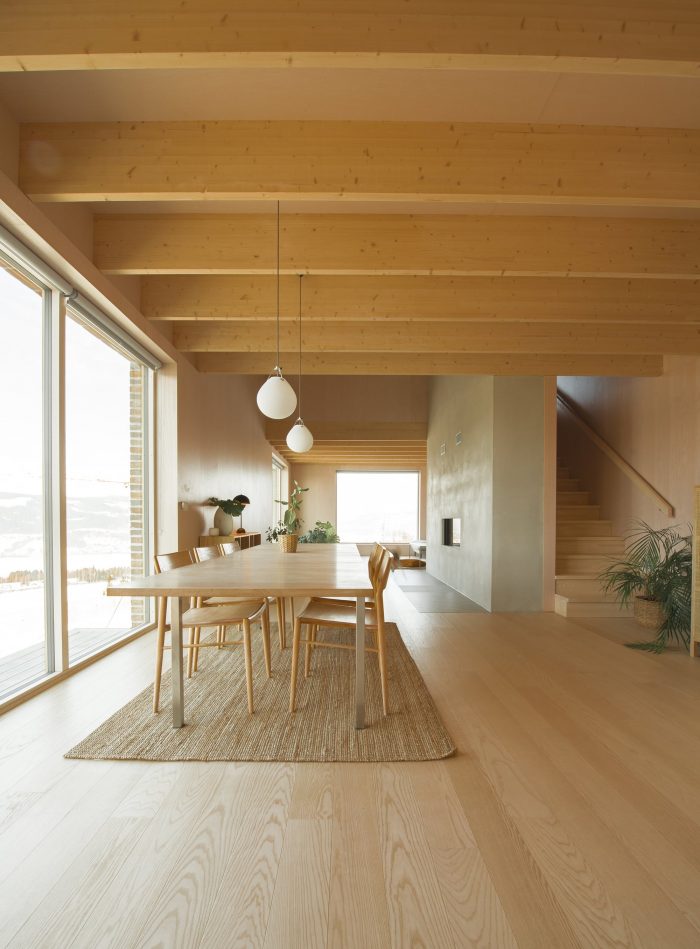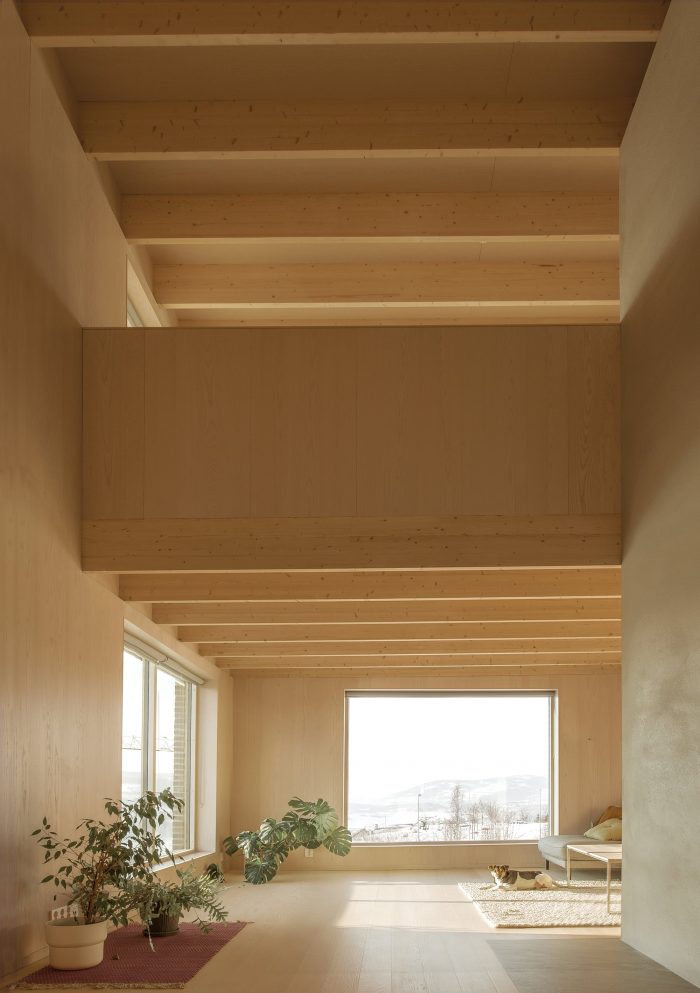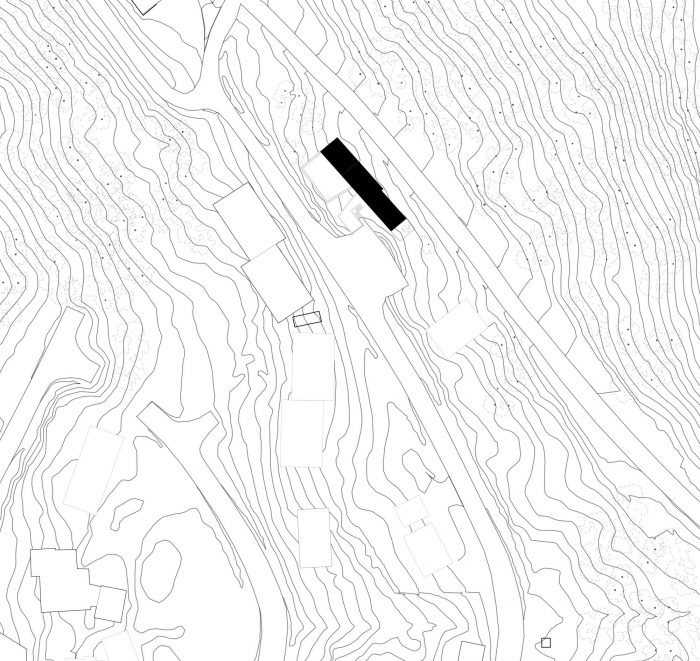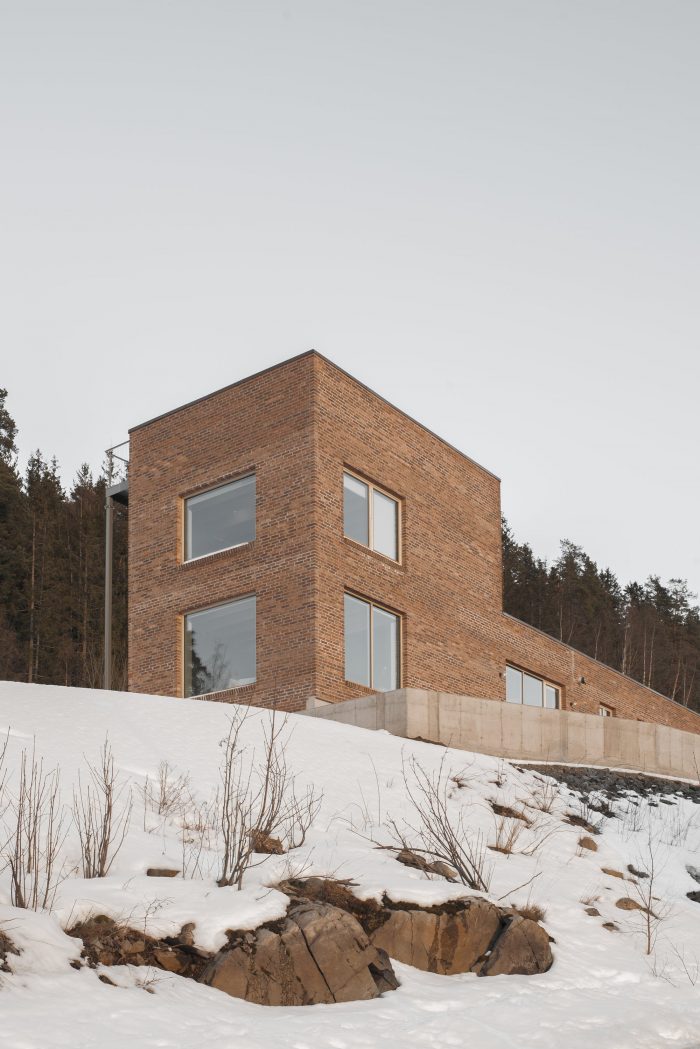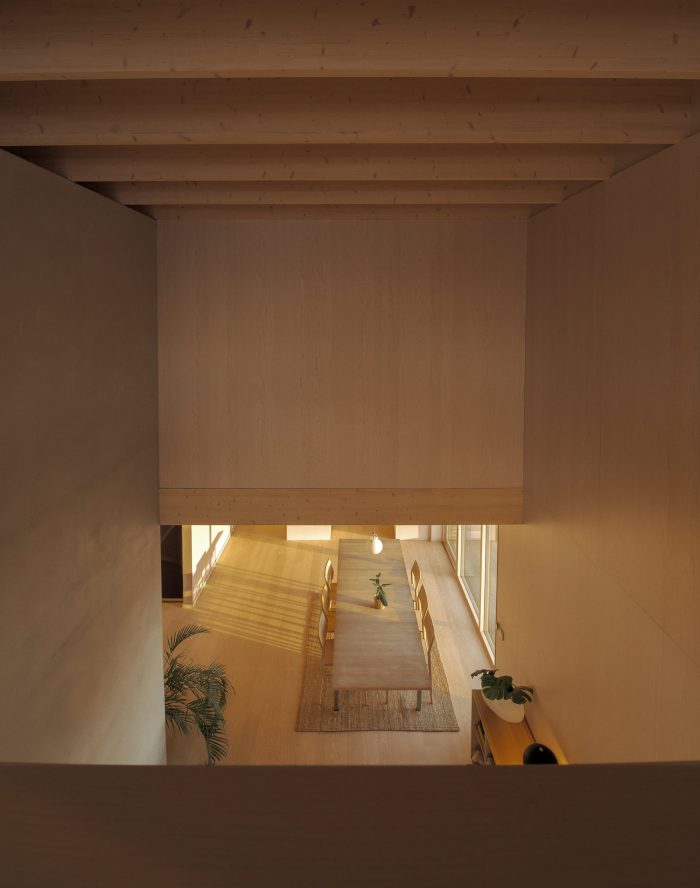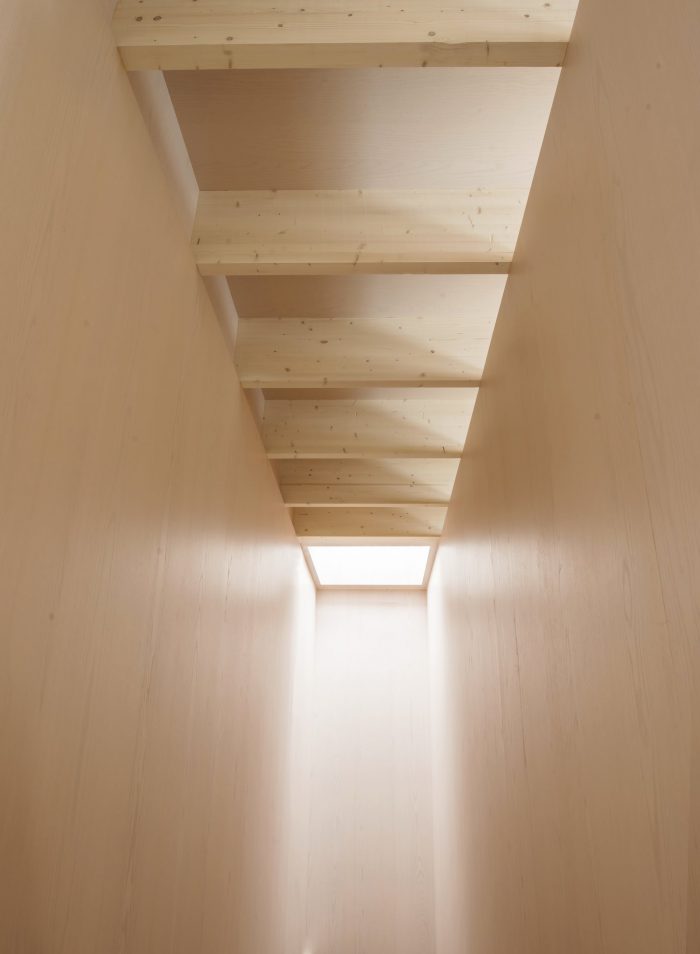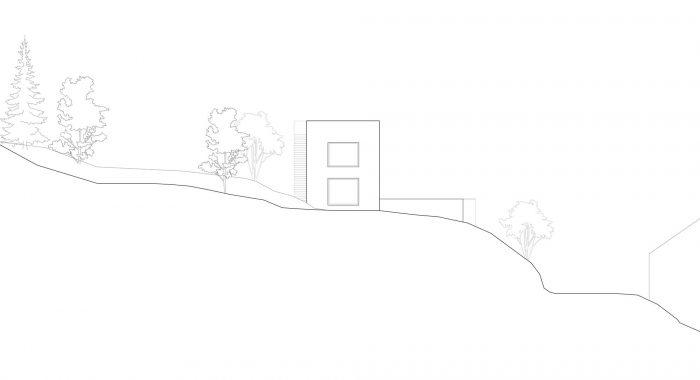纵观历史,米约萨湖周围地区有着悠久的砖石业传统。这里曾是25个砖厂的所在地,利勒哈默尔的火车站和教堂都是用砖砌成的。砖是一种耐用的材料,其重量和特性使其具有永恒的品质。今天,它通常被用作没有结构特性的覆层。我们的兴趣是找到一种方法,在合理的经济和诚实的构造质量和可见的结构方面,建造一个砖房。
Throughout history, the area around the lake of Mjøsa has long traditions with masonry. It has been the home of 25 brickyards and both the railway station and the church in Lillehammer are made in brick. Brick is a durable material with weight and character providing it with a timeless quality. Today, it is usually used as cladding without structural properties. Our interest was to find a way to build a brick house within a rational economy and honesty in terms of tectonic qualities and a visible structure.
利勒哈默尔的砖房是用红砖包裹着承重木结构,通过重复的开口可以看到。砖被清楚而明显地用作包层和天气保护。同时,体积和开口的规划与材料的特性有关,使用传统的砌筑技术来创造开口,而不过度使用钢筋和混凝土作为加固物。重复而简单的外墙遵循底层木质结构的网格,具有简单的细节设计和现代美学。然而,建筑表达是对该地区的历史参考和砖结构的一种延续。
The brick house in Lillehammer is dressed in red brick wrapped around a load-bearing wooden structure, made visible through the repetitious openings. Brick is clearly and visibly used as cladding and weather protection. At the same time, the volume and openings are planned in relation to the properties of the material using traditional masonry techniques to create openings without excessive use of steel and concrete as reinforcements. The repetitive and simple facades follow the grid of the underlying wooden structure with simple detailing and a contemporary aesthetic. Yet, the architectural expression is a continuation of the historical references and brick structures found in the area.
带塔楼的砖房位于利勒哈默尔以南几公里的陡峭山坡上,面向西南,俯瞰米约萨湖,可以看到市中心的景色。一条小路与房子的后侧平行。房子的位置选择是为了获得高于下面相邻邻居的远景,同时也保留了小路的景观。体量被挖入地下,成为一个细长的建筑体,在场地的北端耸立着一个小塔。
The brick house with a tower is located on a steep hill facing southwest, a few kilometers south of Lillehammer, overlooking the lake of Mjøsa and with views towards the city center. A trail path runs parallel with the house on the rear side. The placement of the house is chosen to get long views above the adjacent neighbors below, whilst at the same time preserving the views from the trail path. The volume is dug into the ground as a long, slender building body with a small tower rising over the north end of the site.
塔楼由一个开放空间组成,俯瞰北部的城市和西部的湖泊。塔楼的一部分向下面的楼层开放,在不同的楼层之间建立视觉联系,并为厨房区域提供空气和宽敞的天花板高度。平面布局的安排是为了让三层楼的房子都有长长的视野。孩子们的房间位于一楼,此外还有一个供出租的小公寓。一楼是主要的生活空间,有厨房、客厅和卧室。塔楼房间是一个图书馆/客厅,可以看到两个方向的远景。
The tower is comprised of one open space overlooking the city in the north and the lake in the west. A part of the tower is open to the floor below, establishing visual contact between the different levels and providing the kitchen area with air and a generous ceiling height. The plan layout is organized to give long views through the house on all three stories. The children’s rooms are located on the ground floor in addition to a small apartment for rent. The first floor is the main living space with a kitchen, living room, and bedrooms. The tower room is a library/living room with long views in two directions.
房子的外墙是来自丹麦的红色、棕色和赭石色等不同色调的燃煤砖。外墙是通风的,在砖的短端有灰泥的缝隙。细节和配件都是用铜做的,随着时间的推移会有更深的铜锈。所有的窗户和门都是用白蜡建造的。可见的松木屋顶梁创造了一个开放的天花板,白蜡胶合板放在梁的顶部。白蜡胶合板也被用在墙壁上,与天花板上的60厘米网格相对应。
The house is clad in coal-fired brick in various tones of red, brown and ochre from Denmark. The facade is ventilated with gaps in the mortar on the short end of the bricks. Details and fittings are made in copper which will get a darker patina with age. All windows and doors are built in ash. Visible roof beams in pine create an open ceiling with ash plywood resting on top of the beams. Plywood in ash is also used on the walls corresponding to the 60 cm grid in the ceiling.
Architects: Sanden+Hodnekvam Architects
Area : 220 m²
Year : 2022
Lead Architects : John Sanden, Ingvild Hodnekvam
City : Lillehammer
Country : Norway


